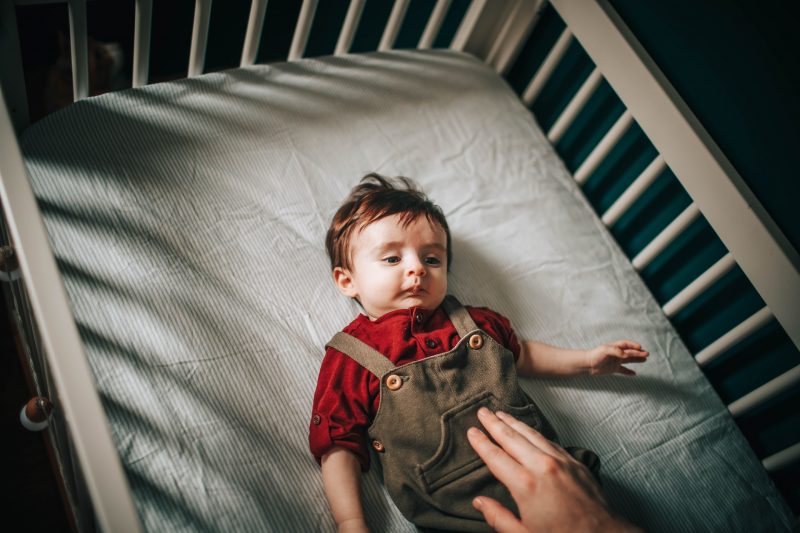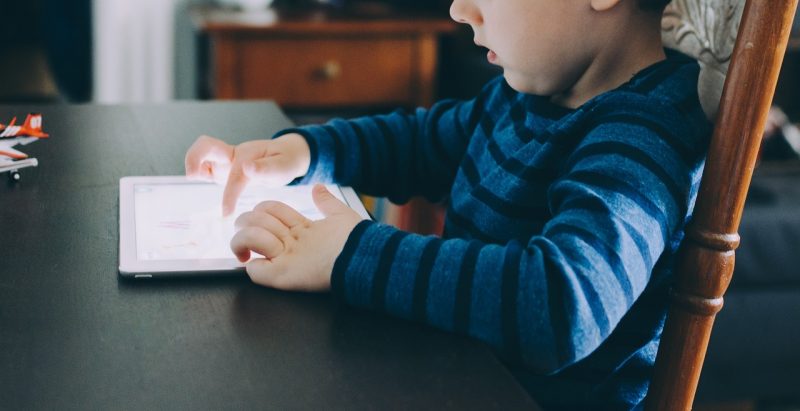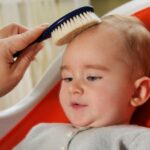Toddlers, by nature, despise bedtime. Everyone else is wide awake. They feel like they’re missing out on something. Then, add in them having to use the restroom or being thirsty and it can seem impossible to keep them in bed.
However, it’s more than possible! These solutions will help you keep your toddler in their crib, reducing the safety hazards that come with crib climbing, even if though they aren’t ready for a big kid bed just yet.
Don’t Automatically Switch To A Toddler Bed
It makes sense that if your little one is scaling the walls of the crib to put them in a toddler bed. This can also seem safer. However, you don’t want to instantly resort to a toddler bed.
The American Academy of Pediatrics recommends that your little one stays in a crib until they are three years old. This helps promote healthy sleeping habits, like sleeping through the night.
Parents will also quickly discover that it’s easier for little ones to escape from their bed if they’re sleeping in a toddler bed, which makes it even more difficult to promote those healthy sleeping habits.
How To Keep Your Toddler In Their Crib
It’s important to keep your toddler in their crib. If toddlers are allowed to escape, they can fall and get hurt. Toddlers that are allowed to get out of their crib are also not learning the healthy sleeping habits that they will need as they get older.
While it can be challenging, there are quite a few things that parents can do to help their little ones stay put after they leave the room.
1. Establish A Bedtime Routine
Children respond really well to bedtime routines! For my littlest, the bedtime routine consists of:
- Relax with some cuddle time and a snack if she’s hungry
- Take a bath (with additional time to play if she wants)
- She puts on her pajamas and brushes her teeth
- Read a story or sing a song (she can choose between one or the other)
- Tuck her in, and finish with a good night kiss on the forehead
As you can see, it’s all pretty relaxing. When children have a fun time before bed, they get hyper and resist going to bed more than they already are going to.
Instead, try to keep things cozy and calm. Some great ideas you can implement into your bedtime routine if you’re establishing a new one include:
- Rocking and singing a song
- A cup of milk to make sure they don’t get thirsty
- A potty break before bed if they frequently get up to use the bathroom
- A bedtime story
- A massage
- Saying prayers
- A cup of tea
- Dim the lights
When deciding what to include in your bedtime routine, tailor it to meet your and your baby’s needs. If your family isn’t religious, omit the prayers.
If a bedtime story is exciting to your kid, consider singing a relaxing song instead. If your little one is scared of the dark, consider making turning on the nightlight a part of your routine.
When you’re implementing a bedtime routine with a toddler, it can be helpful to do this one stage at a time. For example, start giving your little one a bath every night before bed.
Then, once they’re adjusted, read them a story. After the first two things, you can usually implement the rest of the routine.
Children that don’t have a routine often have a harder time settling down to go to bed at night, making this a necessary step in helping your little one stay in their crib.
View in gallery
2. Control Noise Level
If your little one can hear the noise outside their bedroom, they’ll naturally be curious about what is going on. A loud bang and they will want to know what fell.
If people are laughing, they’ll be curious as to what is funny. Even hearing a television show can make them curious. There are a few different ways to address this problem.
White Noise
Playing white noise, such as a fan or a white noise machine, can instantly help your little one fall asleep as well as drown out other noise.
Toddlers and babies might focus on the noise of the fan or white noise machine in their room instead of what’s going on in the house.
- 14 Soothing Sleep Soundtracks: Letsfit white noise machine has 3 white noise, 3 lullabies, 1 fan sound effect and 5 relaxing natural sounds. A sleep sound rhythm that helps you drift off to sleep.
- Soothes Fussy Infants: Our calming nature sounds are perfect for your babys sleep routine to help them fall asleep faster and sleep longer. A Sleeping baby means more sleep for the whole family.
- Great For Privacy and Concentration: Our sound machine can cover up conversations making it perfect for office privacy. It can also be used as a low-cost way of blocking out environmental noises and distractions.
Prices pulled from the Amazon Product Advertising API on:
Product prices and availability are accurate as of the date/time indicated and are subject to change. Any price and availability information displayed on [relevant Amazon Site(s), as applicable] at the time of purchase will apply to the purchase of this product.
Their Own Personal Radio/CD Player
There are plenty of radios and CD players for toddlers on the market! Picking them up a personal CD player can give them the opportunity to listen to lullabies to lull themselves to sleep. It can also drown out the noise of adults in the front room.
Place Them In A Room Away From Main Rooms
At my house, my youngest will have a hard time falling asleep to noise, a light on, or seemingly anything.
Her room is upstairs, down the hall, and through her bedroom doorway. The only adjacent rooms are my son’s room, and he’s considerate enough to be quiet when it’s her bedtime or past her bedtime.
Likewise, the grandson has a room away from the noise. Inside my daughter’s room, there is another room that is his nursery. They can hear virtually nothing.
If possible, rearrange rooms in the house or have children switch rooms to get little ones away from the noise.
Noise Cancelling Headphones
Noise-canceling headphones are another great idea! When your little one wears them, they won’t be able to hear a single noise.
It doesn’t matter whether your baby is sleeping right next to the living room, or in the living room. These headphones won’t let a single noise through so that your little one can fall asleep peacefully.
- ❤【Best hearing earmuffs for infants and toddlers】 These baby earmuffs are perfect for newborns from 3 months and up. Large internal space makes it no pressure on babys ears, with skin-friendly and soft padded head band on top, all we expect is to see a beautiful on your babys face.
- ❤【Zero pressure】Baby earmuffs for noise, baby earphones noise cancelling, baby headphones noise cancelling headphones for Kids, adjustable sides make this an easy fit for ages 0-2 years. Easily take on and off while offering superior comfort around the ears with extra soft padded cups.
Prices pulled from the Amazon Product Advertising API on:
Product prices and availability are accurate as of the date/time indicated and are subject to change. Any price and availability information displayed on [relevant Amazon Site(s), as applicable] at the time of purchase will apply to the purchase of this product.
3. Create A Cozy Environment
When your little one is in an environment that helps promote sleeping, they are more likely to go to sleep in that environment. Whatever your little one finds cozy will work.
So will certain things that might help them relax or entice them to stay in their room.
Fuzzy Blankets, Pillows, Plushies
Toddlers are old enough that they can have blankets and pillows in their beds. Pick up some decorative pillows, plushies, and create a cozy atmosphere in their crib.
This can help them feel warm and cozy enough to drift off peacefully to sleep. Make sure that pillows and plushies are cozy yet small.
- Super Soft and Fuzzy: EMME Double-layer soft baby blanket with one side Fluffy microfiber faux fur and the other Sherpa offers your baby with maximum softness.
- USAGE SCENARIOS: Share family hours with your children and EMME Faux Fur Reversible Baby Blanket while relaxing on the couch or in the garden, brings your baby a warm and cozy nap time. Prefect for indoor and outdoor use to provide continuous warmth throughout the year.
- Material Features: 100% microfiber blanket can create super soft and fuzzy touch. Microfiber has stronger durability and better fade resistant than cotton fiber, which can prevent pilling over time and has less elasticity to keep its shape for long.
Prices pulled from the Amazon Product Advertising API on:
Product prices and availability are accurate as of the date/time indicated and are subject to change. Any price and availability information displayed on [relevant Amazon Site(s), as applicable] at the time of purchase will apply to the purchase of this product.
When children have too many stuffed animals or they are larger, they can use them as a step stool for their next jailbreak. Toddlers are pretty clever when it comes to getting what they want!
Make Sure Their Mattress Is Comfortable
Most babies don’t mind a firm mattress. Some babies don’t sleep well on these mattresses, however. If your little one likes your bed better than their own, this could be because your mattress is more comfortable.
Pick up a crib-sized foam mattress for your little one so that they can snuggle into their mattress to go to sleep. Toddlers are old enough that letting them sleep on a foam mattress does not pose a risk of suffocation.
Projection Toys
Projector style toys are great for helping children go to sleep. Projector style toys show images of the stars, animals, or even the ocean on the ceiling so that your baby can look at them while they fall asleep.
Most of these toys have an option that will let them play lullabies too!
- Starry Light Projector - Harry the Hedgehog is a battery operated cordless starry projector with a soft plush exterior to help soothe your child during nap and bedtime. The plush animal can be detached from the projection module, for quick and easy cleaning (hand wash recommended).
- Color Changing - The magical star and moon show projects on the ceiling in 4 different color options (orange, blue, green or multicolour). Harry the Hedgehog is an ideal bedroom staple for parents and children to enjoy.
- 3 Soothing Melodies - Harry the Hedgehog plays soothing melodies to calm your child and prepare them for a good night sleep. The three music options include: heartbeat sound, nature songs or lounge music.
- Auto Shut-off - To allow your little one a peaceful and quiet night of sleep, the music playing will automatically shut off after 15 minutes and the projector will turn off after 30 minutes.
- Cry Sensor - The cry sensor automatically re-initiates the light and/or sound to help sooth your child instantaneously. All this for a night of blissful sle
Prices pulled from the Amazon Product Advertising API on:
Product prices and availability are accurate as of the date/time indicated and are subject to change. Any price and availability information displayed on [relevant Amazon Site(s), as applicable] at the time of purchase will apply to the purchase of this product.
Comfortable Pajamas
When your little one is trying to sleep, they need to be comfortable to fall asleep. This includes what they are wearing. If your child is sensitive to the feel of tags, cut the tags off their pajamas.
Children that toss and turn in their sleep will appreciate being able to wear shorts or a nightgown to bed so that their clothing doesn’t get tangled in their sleep. Make sure that fabrics are not scratchy or itchy, too.
A Cozy Temperature
We all want our children to be warm, but sometimes we can make them a little too warm. Most people, children included, don’t sleep well when they’re hot.
Instead, aim for a temperature of approximately 68 degrees. If it’s too hot in their room, turn down the thermostat, pick up a window ac unit or buy them a fan.
If it’s too cold, make sure they have warm clothing and blankets to keep them cozy.
4. Limit Stimulation Before Bedtime
View in gallery
There are certain things that are known for keeping children awake at night.
When we don’t realize that something is keeping them awake, we wind up unintentionally making bedtime harder than it should be. Things that can keep our little ones awake should stop a few hours before bedtime whenever possible.
Screen Time
The American Academy of Pediatrics recommends that children only have screen time for 1-2 hours per day. If possible, schedule this for earlier in the day. Watching a few cartoons together is a great way to wind down after the school day!
Playing games or other electronics also count for screen time. This includes iPads, video games (even the educational ones), and watching television when you pick the program.
The light from these devices signals our brains to stay awake, resulting in little one’s having a hard time falling asleep.
Eliminate Caffeine
There’s hidden caffeine in multiple foods and drinks. For example, lavender tea is known to promote relaxation. However, some brands of lavender tea also have caffeine in them. It makes them a bit counterproductive.
Other foods also have hidden caffeine. For example, dark chocolate. There’s a small amount of caffeine in hot chocolate as well! Even decaf versions of tea and cappuccino often have small amounts of caffeine.
Children cannot handle a small amount of caffeine as easily as adults can. This is because their bodies are smaller. Instead, simply avoid caffeine if you can.
If not, let your child have small amounts early in the afternoon so it has worn off before bedtime.
Stimulant Medications
Stimulant medications are often prescribed for children that have hyperactive disorders, such as ADHD.
This is typically effective because instead of making a child more hyper, stimulant medication relaxes the ADHD brain. Although this isn’t typically prescribed for toddlers, there’s always the exception.
However, if the dose prescribed is too high, it will result in your child not being able to sleep at night. Instead, they will continue to be hyperactive until the wee hours of the morning.
I’m a mom to a child on ADHD medicine right now. When the dose was too high, she up until one in the morning. She no longer seemed to need sleep.
With a lower dose, the medicine is effective, yet she has fewer side effects, such as not being able to sleep. Please keep in mind that I’m not a medical professional.
If your child is on stimulant medication and will not sleep through the night or stay in their crib at night, it’s important to consult your pediatrician for medical advice or an appropriate dosage.
5. Reserve Their Bed For Sleeping
It can be tempting to let your toddler relax while they play on a phone or watch television. You might even want to let them play with toys while in bed to keep them in their crib.
However, this actually encourages them to stay awake, which will eventually lead to them climbing out of their crib even more than they already are!
Instead, make sure that they know their bed is for sleeping. This will help them relax and go to sleep in the long run. It will take patience and persistence, but the effort will definitely pay off!
In Conclusion
When toddlers start scaling the sides of their crib in search of something more fun than bedtime, it’s important to stop the behavior as soon as possible.
Promote healthy sleeping habits in every way possible to encourage your little one to recognize that it is time for sleep once they are in their crib.






